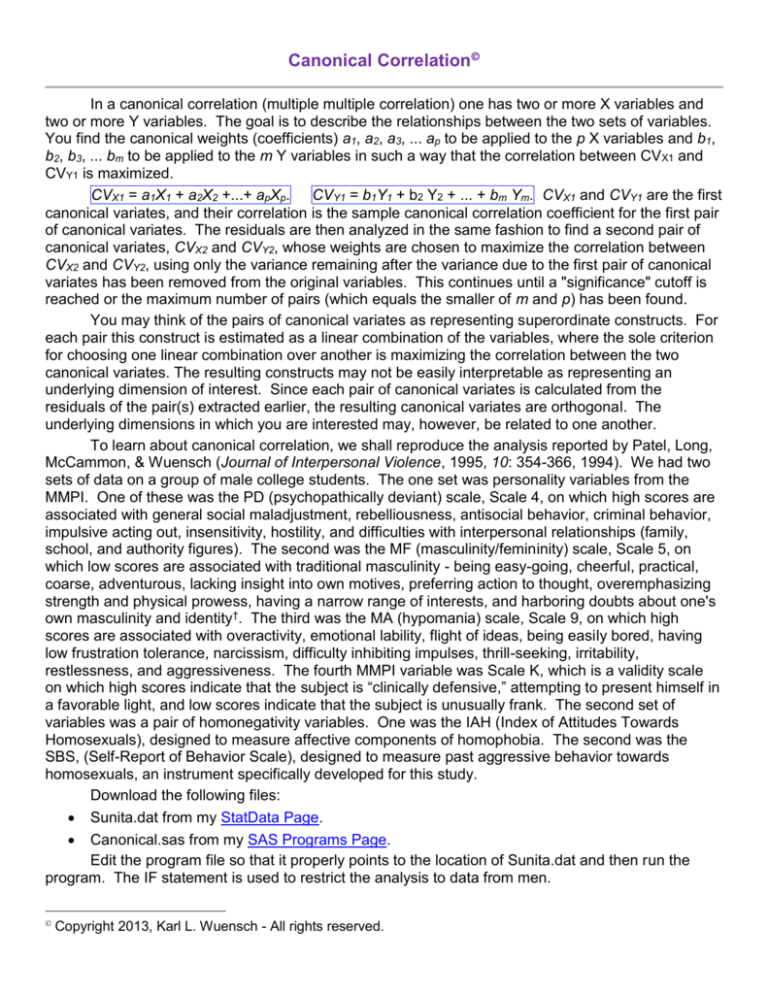
Canonical Correlation
In a canonical correlation (multiple multiple correlation) one has two or more X variables and
two or more Y variables. The goal is to describe the relationships between the two sets of variables.
You find the canonical weights (coefficients) a1, a2, a3, ... ap to be applied to the p X variables and b1,
b2, b3, ... bm to be applied to the m Y variables in such a way that the correlation between CV X1 and
CVY1 is maximized.
CVX1 = a1X1 + a2X2 +...+ apXp. CVY1 = b1Y1 + b2 Y2 + ... + bm Ym. CVX1 and CVY1 are the first
canonical variates, and their correlation is the sample canonical correlation coefficient for the first pair
of canonical variates. The residuals are then analyzed in the same fashion to find a second pair of
canonical variates, CVX2 and CVY2, whose weights are chosen to maximize the correlation between
CVX2 and CVY2, using only the variance remaining after the variance due to the first pair of canonical
variates has been removed from the original variables. This continues until a "significance" cutoff is
reached or the maximum number of pairs (which equals the smaller of m and p) has been found.
You may think of the pairs of canonical variates as representing superordinate constructs. For
each pair this construct is estimated as a linear combination of the variables, where the sole criterion
for choosing one linear combination over another is maximizing the correlation between the two
canonical variates. The resulting constructs may not be easily interpretable as representing an
underlying dimension of interest. Since each pair of canonical variates is calculated from the
residuals of the pair(s) extracted earlier, the resulting canonical variates are orthogonal. The
underlying dimensions in which you are interested may, however, be related to one another.
To learn about canonical correlation, we shall reproduce the analysis reported by Patel, Long,
McCammon, & Wuensch (Journal of Interpersonal Violence, 1995, 10: 354-366, 1994). We had two
sets of data on a group of male college students. The one set was personality variables from the
MMPI. One of these was the PD (psychopathically deviant) scale, Scale 4, on which high scores are
associated with general social maladjustment, rebelliousness, antisocial behavior, criminal behavior,
impulsive acting out, insensitivity, hostility, and difficulties with interpersonal relationships (family,
school, and authority figures). The second was the MF (masculinity/femininity) scale, Scale 5, on
which low scores are associated with traditional masculinity - being easy-going, cheerful, practical,
coarse, adventurous, lacking insight into own motives, preferring action to thought, overemphasizing
strength and physical prowess, having a narrow range of interests, and harboring doubts about one's
own masculinity and identity†. The third was the MA (hypomania) scale, Scale 9, on which high
scores are associated with overactivity, emotional lability, flight of ideas, being easily bored, having
low frustration tolerance, narcissism, difficulty inhibiting impulses, thrill-seeking, irritability,
restlessness, and aggressiveness. The fourth MMPI variable was Scale K, which is a validity scale
on which high scores indicate that the subject is “clinically defensive,” attempting to present himself in
a favorable light, and low scores indicate that the subject is unusually frank. The second set of
variables was a pair of homonegativity variables. One was the IAH (Index of Attitudes Towards
Homosexuals), designed to measure affective components of homophobia. The second was the
SBS, (Self-Report of Behavior Scale), designed to measure past aggressive behavior towards
homosexuals, an instrument specifically developed for this study.
Download the following files:
Sunita.dat from my StatData Page.
Canonical.sas from my SAS Programs Page.
Edit the program file so that it properly points to the location of Sunita.dat and then run the
program. The IF statement is used to restrict the analysis to data from men.
Copyright 2013, Karl L. Wuensch - All rights reserved.
2
The zero-order correlations show that aggression against gays is significantly correlated with
hypomania and homophobia. Homophobia is significantly correlated with masculinity. Although not
significantly correlated with either of the homonegativity variables, psychopathic deviance is
significantly associated with hypomania and with the K scale (clinical defensiveness).
In PROC CANCORR, ALL requests all optional statistics, VN gives a name to the variables
specified in the VAR statement, WN gives a name to the variables specified in the WITH statement,
VP gives a prefix to be used with names for the canonical variates constructed from the variables in
the VAR statement, and WP gives a prefix to be used with names for the canonical variates
constructed from the variables in the WITH statement.
Two pairs (the maximum) of canonical variates were constructed. The first has a canonical
correlation of .38, the second .32. The first canonical correlation will always have a value at least as
large as the largest R between one variable and the opposite set of variables, but that canonical r can
be much larger than that largest R. The test of the significance reported in the row with the first
eigenvalue is a test that as a set (both pairs of canonical variates tested simultaneously) CV X is
independent of CVY. This null was rejected, p = .0099. One next tests all remaining pairs (as a set)
with the first pair removed, then all remaining pairs with the first and second pairs removed, etc. For
the p values from such a test to be valid, at least one of the two sets of variables should have an
approximately normal multivariate distribution. For these data the second canonical correlation was
significant (p = .0392) with the first removed. I generally do not interpret a canonical correlation that
is less than .30, even if it is significant, since it is trivially small (the overlap, percentage of variance
shared by the two canonical variates, is 9% or less), but if I found a small correlation to be
meaningful, I just might share my interpretation of it.
For each root the eigenvalue is equal to the ratio of the squared canonical correlation
(explained variance in the canonical variate) to one minus the squared canonical correlation
(unexplained variance in the canonical variate). An eigenvalue of 1 would be obtained if the squared
canonical correlation was .5 – the proportion of variance explained would be equal to the proportion
of variance not explained. An eigenvalue of 1/3 would be obtained if the squared canonical
correlation was .25 – the proportion of unexplained variance would be three times the proportion of
explained variance. An eigenvalue of 3 would be obtained if the squared canonical correlation was
.75 – the proportion of explained variance would be three times the proportion of unexplained
variance.
CANCORR gave us the raw and the standardized coefficients (a1, a2, ... b1, b2, ...) for each pair
of canonical variates. One generally interprets the canonical variates from their loadings rather than
from their canonical coefficients, and SAS gives us those loadings under the descriptive title
"Correlations Between The (set of variables) And Their Canonical Variables." For the Homonegativity
variables, CV1 loads heavily on both IAH and SBS -- high scores on this CV indicate that the
individual is homophobic and aggresses against gays. For the MMPI variables, CV1 loads well on all
MMPI scales (negatively on MF and K) -- high scores on this CV indicate that the individual is
hypomanic, masculine, psychopathically deviant, and unusually frank. The canonical correlation for
the first pair of canonical variates indicates that stereotypically masculine, hypomanic,
psychopathically deviant, frank men are homophobic and report aggressing against homosexuals.
The second pair of canonical variates show suppression. Look at the correlations and the
standardized coefficients (beta weights) for the homonegativity CV2 and its variables. For each of the
variables, the beta weights are higher than the correlations, indicating cooperative suppression (each
variable suppresses irrelevant variance in the other). Individuals scoring high on this CV are not
homophobic, but do aggress against gays. Perhaps these individuals are, in the words of one of my
graduate students (Cliff Wall), “equal opportunity bullies” -- they aggress against everybody, not just
against gays. Such nondiscriminatory aggression is associated with (look at the loadings for the
second CV of the MMPI) hypomania and femininity (dare I call this CV ‘bitchiness’?).
3
One generally wants to know how much variance a canonical variate extracts from its set
of variables. Look at the loadings for the Homonegativity variables. Homoneg_1 captures .5219 2 of
the variance in IAH and .99072 of the variance in SBS, so the proportion of the total variance in the
Homonegativity variables captured by the Homoneg_1 canonical variate is the mean of .5219 2 and
.99072 = .6269. We can find the proportion of variance each canonical variate extracts from its own
set of variables by simply finding the mean of the squared loadings between the canonical variate and
the variables of its own set. SAS gives us these proportions as "Standardized Variance of the (set of
variables) Explained by Their Own Canonical Variables." Homoneg_2 captures the remaining
37.31% of the variance in the Homonegativity variables, for a total of 100% captured by the two
Homonegativity canonical variates.
MMPI_1 captures 22.70% of the variance in the MMPI variables and MMPI_2 another 28.92%,
for a total of 51.62% captured by the two MMPI canonical variates. Note that with respect to
capturing variance in MMPI, the second MMPI canonical variate captured more than did the first recall that canonical variates are ordered by the size of their canonical correlations, not by how much
variance they capture in their variables. Here, the first weighted linear combination of the MMPI is
constructed from that variance in the MMPI that is best related to the first linear combination of the
Homonegativity, but that variance of the first MMPI is less than that of the second MMPI. It is always
true that 100% of the variance will be captured from the smaller set of variables and less from the
larger set. If both sets have the same number of variables, all the variance in each set will be
captured by its own p = m canonical variates.
SAS also gives us the correlations between each variable and each opposite canonical
variate, under the title "Correlations Between the (set of variables) and the Canonical Variables of the
(opposite set of variables). Look at these cross-set loadings for the Homonegativity variables. The
MMPI_1 canonical variate "explains" .19822 of the variance in IAH and .37622 of the variance in SBS,
.19822 .37622
.0904% of the total variance in the Homonegativity variables. Note
for a total of
2
that this percentage was computed as a mean of the squared (cross-set) loadings, just as we
previously did to find the proportions of variance a canonical variate captured from its own set of
variables. This percentage is called a redundancy. The redundancy Xj is the proportion of the total
variance in the set of X variables that is redundant with (predicted from, "explained" by) the j th
canonical variate of the (opposite set) Y variables.
Such a redundancy can also be computed from own-set proportions of variance captured and
the canonical correlations. Homoneg_1 captures .6269 of the variance in its own set of variables.
The canonical r2 (the square of the r between MMPI_1 and Homoneg_1) is .1442, = indicating that
14.42% of the variance in the Homoneg_1 canonical variate is explained by its correlation with the
MMPI_1 canonical variate. Well, if .6269 of the variance in the Homonegativity variables is captured
by the Homoneg_1 canonical variate and .1442 of the variance in Homoneg_1 is explained by
MMPI_1, then (.6269)(.1442) = .0904 of the variance in the Homonegativity variables is explained by
the MMPI_1 canonical variate, which is exactly what SAS tells us under the title "Standardized
Variance of the Delinquency Explained by the Opposite Canonical Variables."
In general, you multiply (the proportion of variance that one X canonical variate captures from
its own set of X variables) times (the squared canonical correlation between that X canonical variate
and the corresponding Y canonical variate) to obtain the amount of variance in the X variables
explained by the canonical variate from the (opposite) Y set of variables.
For our data, the MMPI canonical variates explain a total of 12.95% of the variance in the
Homonegativity variables (.0904 explained by MMPI_1, .0391 explained by MMPI_2). The
Homonegativity canonical variates explain a total of 6.30% of the variance in the MMPI variables
(.0327 explained by Homoneg_1, .0303 explained by Homoneg_2).
4
R2
SAS completes the canonical redundancy analysis by giving for each variable the
for
predicting that variable from the first canonical variate from the opposite set of variables, the first and
second canonical variates from the opposite set, the first three canonical variates from the opposite
set, etc. For our data, SBS is predicted moderately well by MMPI_1 (R2 = .1415) and only very
slightly better by the combination of MMPI_1 and MMPI_2 (R2 = .1434). IAH is not as well predicted
by MMPI_1 (R2 = .0393), but adding MMPI_2 helps a lot (R2 = .1155). Note that averaging the IAHMMPI_1 and SBS-MMPI_1 R2 values gives the redundancy for Homonegativity from MMPI_1
(proportion of variance in the Homonegativity variables explained by the MMPI_1 canonical variate).
Likewise, averaging the R2 values for predicting IAH and SBS from MMPI_1 and MMPI_2, (.1155 +
.1434) / 2 = .1295, gives the total redundancy for the Homonegativity variables predicted from the
MMPI canonical variates. The redundancies of the MMPI variables predicted from the
Homonegativity canonical variates can likewise be obtained by averaging the R2 values between the
MMPI variables and the "First M Canonical Variables of the Homonegativity."
You should note that it is quite possible for a pair of canonical variates that have a large
squared correlation not to explain much of the variance in the variables, that is, the canonical analysis
may produce a pair of highly correlated weighted combinations of the variables that extract only a
very small amount of the variance in the original variables. There are ways to produce weighted
combinations of variables that maximize redundancies rather than canonical correlations, but they will
not be presented here.
Do note that redundancies are not symmetrical - an X canonical variate may explain much
more (or less) of the variance in the Y variables than does the Y canonical variate in the X variables.
For our example, the MMPI canonical variates explain 13% of the variance in the Homonegativity
variables, but the Homonegativity canonical variates explain only 6% of the variance in the MMPI
variables. Much of the unexplained variance in the MMPI variables is in the PD variable - the R2 for
predicting PD from both Homonegativity canonical variates was only .02.
Note that I created an output data set (Sol) with the four canonical variates. PROC CORR on
those data shows that the for each set of variables the correlation between the first canonical variate
and the second is absolutely zero.
SPSS
Download the following files
Sunita.sav from my SPSS Data Page.
Canonical.sps from my SPSS Programs Page.
Bring Canonical.sps into SPSS. Edit Canonical.sps so that it properly points at Sunita.sav.
From the SPSS Syntax Editor, click Run, All.
In SPSS one does canonical correlation by using the MANOVA routine, calling one set of
variables DEPENDENT VARIABLES and the other set COVARIATES. Under
"EFFECT..WITHIN+RESIDUAL Regression" SPSS gives you essentially the same output that SAS
does, formatted differently. Ignore the "EFFECT..CONSTANT" output.
MANOVA IAH SBS with MA MF PD K
/discrim stan corr alpha(1)
/print signif(mult univ eigen dimenr)
/noprint param(estim)
/method=unique
/error within+residual
/design .
IAH and SBS are the “Dependents” and MA, MF, PD, and K are the “Covariates.”
5
The "ALPHA(1)" statement in the DISCRIM subcommand is needed to force MANOVA to
calculate all possible canonical functions, regardless of whether of not they are significant.
The "Univariate F-tests" give us the squared multiple correlation coefficients (SMC's) for
predicting IAH and SBS from the MMPI variables. Note that these match the SMC's that SAS gave
us for predicting IAH and SBS from MMPI canonical variates 1 and 2. We would get the same SMC’s
if we just did two multiple regressions, one predicting IAH from the MMPI variables and the other
predicting SBS from the MMPI variables.
Under the title “Variance in dependent variables explained by canonical variables” is the
redundancy analysis for the homonegativity variables. In the “Pct Var Dep” column are the
percentages of standardized variance in the homonegativity variables explained by their own
canonical variates, and in the “Pct Var CO” column are the percentages of standardized variance in
the homonegativity variables explained by the opposite (MMPI) canonical variates.
Under the title “Variance in covariates explained by canonical variables” is the redundancy
analysis for the MMPI variables. In the “Pct Var DE” column are the percentages of standardized
variance in the MMPI variables explained by the opposite (homonegativity) canonical variates, and in
the “Pct Var CO” column are the percentages of standardized variance in the MMPI variables
explained by their own canonical variates.
I find the SAS output to be easier to read than the SPSS output, especially for the redundancy
analysis. The SPSS output used to be even more confusing. In some earlier versions of SPSS the
proportions of variance in the X variables explained by the Y canonical variates was mistakenly
described as being the proportions of variance in the Y variables explained by the X canonical
variates. I explained this problem to the folks at SPSS, and, eventually, they fixed it. I also explained
it to the authors of a multivariate statistics text (Tabachnik and Fidell) who made exactly the same
error. They never responded to my letter.
I should caution you that sometimes SPSS/PASW will construct a canonical variate that is
exactly the opposite of that created by SAS. For example, look at these loadings from SAS, paying
special attention to the second canonical variate
Correlations Between the Homonegativity and Their Canonical Variables
Homoneg_1
IAH
0.5219
-0.8530
SBS
0.9907
0.1361
High Scores on Homoneg_1 reflect high scores on the SBS and, to a lesser degree, on the IAH.
High Scores on Homoneg_2 reflect high scores on the SBS and low scores on the IAH (notice the negative sign on the loading for IAH)
MMPI_1
Homoneg_2
MMPI_2
MA
0.5326
0.7224
MF
-0.4937
0.7638
PD
0.3241
0.2129
K
-0.5251
-0.0788
High scores on MMPI_1 reflect high scores on MA, high scores on PD, low scores on MF, and low scores on K.
High scores on MMPI_2 reflect from high scores on MA and MF.
Now look at the loadings produced by SPSS
6
Correlations between DEPENDENT and canonical variables
Function No.
Variable
iah
sbs
1
2
.52190
.99069
.85301
-.13613
Correlations between COVARIATES and canonical variables
CAN. VAR.
Covariate
ma
mf
pd
k
1
2
.53259
-.49368
.32410
-.52513
-.72236
-.76384
-.21288
.07876
Note that the second canonical variate of the homonegativity variables is just the opposite of
that created by SAS and the same is true of the second canonical variate of the MMPI variables. The
interpretation of the correlation is still the same, it is just that instead of saying A is positively related
to B we are now saying that NOT A is positively related to NOT B.
This is an annoyance, and can be confusing, but it is otherwise not a problem. Consider this
simple example. You have three X variables based on responses to a survey. You expect X1 to be
positively associated with a conservative attitude about government spending and X2 and X3 to be
negatively associated with that attitude. You also have three Y variables, based on an audit of the
subjects’ personal finances. You expect Y1 and Y2 to be positively associated with frugality and Y3
to be negatively associated with frugality.
SAS creates a canonical variate CVx1 = w1X1 – w2X2 – w3X3. High scores on this CV indicate
that the subject has conservative attitudes about government spending.
SAS creates a canonical variate CVy1 = -w1Y1 + w2X2 + w3X3. High scores on this CV indicate
that the subject is frugal.
The canonical correlation shows that frugality is associated with conservative attitudes about
government spending. [This is speculative, on my part, as I know lots of people with such
conservative attitudes who are spendthrifts with their own finances).
SPSS creates a canonical variate CVx1 = -w1X1 + w2X2 + w3X3. High scores on this CV indicate
that the subject has liberal attitudes about government spending.
SPSS creates a canonical variate CVy1 = w1Y1 - w2X2 - w3X3. High scores on this CV indicate
that the subject is wasteful.
The canonical correlation shows that wastefulness is associated with liberal attitudes about
government spending. This is really the same conclusion reached upon interpretation of the weights
provided by SAS. In the one case we conclude that A is associated with B, and in the other case we
conclude that not A is associated with not B.
At any time, if you find it makes the interpretation easier, you should feel free to multiply all of
the weights of both canonical variates by minus one.
Fair Use of this Document
SAS Listing
Return to my statistics lessons page.
7
Copyright 2013, Karl L. Wuensch - All rights reserved.
Endnote
†
A high Scale 5 score indicates that the individual is more like members of the other gender than are most
people. A man with a high Scale 5 score lacks stereotypical masculine interests, and a woman with a high
Scale 5 score has interests that are stereotypically masculine. Low Scale 5 scores indicate stereotypical
masculinity in men and stereotypical femininity in women. MMPI Scale scores are “T-scores” – that is, they
have been standardized to mean 50, standard deviation 10. The normative group was residents of Minnesota
in the 1930’s. The MMPI-2 was normed on what should be a group more representative of US residents.

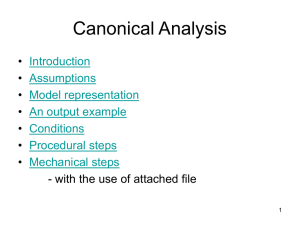
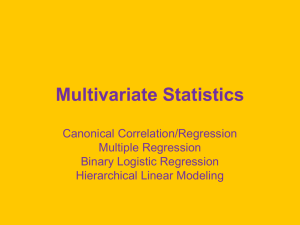

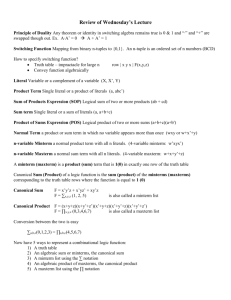
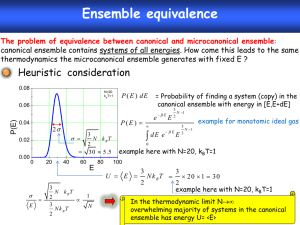


![Electrical Safety[]](http://s2.studylib.net/store/data/005402709_1-78da758a33a77d446a45dc5dd76faacd-300x300.png)